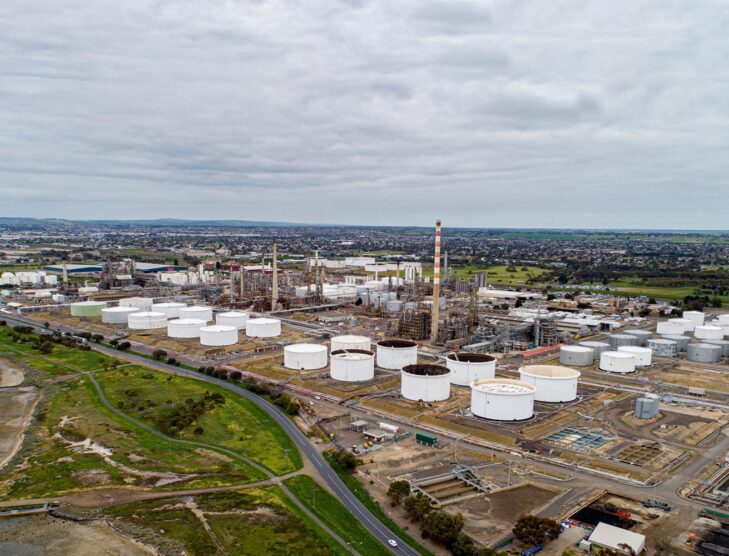
Australia’s Viva Energy announces net-zero ambition
Viva Energy Group Limited, which supplies one-fourth of Australia’s fuel requirements, announced its commitment to reduce its carbon emissions at its operations, across the medium- and long-term in relation to its Scope 1 and 2 emissions. This will mean improving Geelong Refinery’s emissions performance through a combination of energy efficiency projects and operational optimisation initiatives by 2030, and re-purposing the refinery by 2050.
Non-refining operations
Over the medium term, Viva Energy Group is targeting net zero Scope 1 and 2 emissions across retail, fuels and marketing (all non-refining parts of the business) by 2030.
To achieve these emission reduction goals, Viva Energy will:
- improve energy efficiency through operational energy optimisation;
- implement and invest in new assets and processes to improve energy efficiency at its operational sites;
- source renewable electricity for its operations through investment in renewable projects, directly purchasing renewable electricity or acquiring large-scale generation certificates (LGCs) from renewable generation projects; and
- offset residual emissions by investing in carbon off-set projects and purchasing off-sets sourced from certified and credible offset schemes.
Gas terminal project
For its Gas Terminal Project, Viva Energy is targeting net zero Scope 1 and 2 emissions for the life of the project, from the construction phase through all periods of operation. A sustainability lens has been brought to all aspects of the project’s development and, where possible, carbon emissions have been designed out of the operations, and a net zero approach adopted from its commencement.
The Gas Terminal Project remains subject to regulatory approval pursuant to the Environmental Effects Statement process and, further, Final Investment Decision and approval by the Board of Viva Energy Group Limited.
Refining operations
The refinery is an energy intensive and trade exposed (EITE) facility. Compliance with ultra-low sulphur petrol specifications will add processing units and further increase energy use and emissions at the refinery, but will in turn provide wider air quality and vehicle emissions benefits. The most impactful contribution to emissions reduction the refinery can make over time will be producing lower carbon intensive products for the market, allowing customers to reduce their overall emissions.
Viva Energy has taken the first step in improving Geelong Refinery’s emissions performance by committing to a 10% reduction in emissions intensity by 2030 through a combination of energy efficiency projects and operational optimisation initiatives.
Long-term 2050 ambition
Over the longer term, Viva Energy announcede an ambition to reach Net Zero Scope 1 and 2 emissions across all operations by 2050. The company said “we expect this will mean the repurposing of Geelong and its processing capability by 2050. Our aim is to balance our role in supporting Australia’s energy security, with our desire to progress the facility to net zero by 2050, at the latest.”
“These commitments form an important part of Viva Energy’s longer-term sustainability and new energy goals, and demonstrate our commitment to playing a critical role in Australia’s transition to a low-carbon future,” the company said in a statement.
“Viva Energy fully supports the objectives of the Paris Agreement. We play an important role in the energy security and infrastructure of Australia, and our announcement today shows our commitment to addressing the impacts of climate change in Australia and globally,” Robert Hill, Viva Energy chairman, said.
“The liquid fuels and lubricants we supply will continue to play a critical role as the energy system transitions to a lower-carbon future. As well as setting our own Scope 1 and 2 emission goals today, we also have a number of initiatives in the new energies sector, to supply lower-carbon fuels to the market in the future. These initiatives and our commitments to reduce our own carbon footprint, form an important part of Australia’s pathway to a lower-carbon energy system.”
.jpg)









